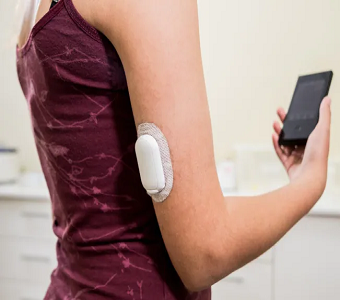Biotech has roared back and seen a strong start to the new year. Since November, in less than 3 months, the XBI is up 32%. The rally has been driven primarily by expected shift in Fed interest rate policy, continued M&A activity from big pharma and generalist investors re-entering the space. The FOMO factor is real and something that should continue to drive biotech higher, as long as the Fed stays the path of easing in 2024.
There is an inverse correlation between Fed rate expectations and the XBI. The cost of capital for cash-burning biotechs depends on Fed rates, making it a powerful macro determinant for the sector. The lower rates, and future rate expectations, the more fuel for biotech to accelerate higher.
In December 2023, the US Federal Reserve held key interest rates steady for the third time and set the table for three rate cuts in 2024, and more to come beyond. The question now is, do rate cuts come during meetings in March? April? June? It’s a matter of when, not if.

With this eased environment, investors are re-entering biotech and big pharma is trying to beef up pipelines with acquisitions still at reduced valuation levels. This was evident at JP Morgan 2024 where over $4B in M&A was announced and a pending mega-$10B+ deal is imminent with Cytokinetics (CYTK).
- JnJ acquired ADC platform Ambrx (AMAM) for $2B
- Merck agreed to acquire Harpoon (HARP) for up to $680M
- Novartis 250M acquisition of Calypso
- GSK’s $1.4 billion deal to buy asthma drugmaker Aiolos Bio
2024 Trends That Are Expected to Continue Momentum
Big Pharma Looking for Big Revenue Potential
Like wen mentioned in a prior post (READ HERE), Big pharma has shared their M&A strategy and it’s not expected to be any different from 2023. They want big revenue potential, late stage names and are willing to pay a hefty price. That leaves a short list of targets in areas such as cardiovascular, immunology and neuro. These are big areas that have widespread indications, and thus big revenue potential. A few of the M&A targets include Cytokinetics (CYTK), Xenon (XENE) and argenx (ARGX). Although we don’t anticipate M&A activity to pick-up in small cap land, we do think that small cap bios will benefit from the added investor interest in biotech. They will rise with the tide.
Immunology & Inflammation’s New Wave
I&I encompasses autoimmune and inflammation conditions such as inflammatory bowel disease (e.g., Crohn’s disease), rheumatoid arthritis, psoriasis, Type 1 diabetes, and multiple sclerosis. The human immune response is double-edged with dysregulation on either side provoking disease. With too little activity, our bodies become vulnerable to infection, but too much activity can drive an immune response to attack otherwise healthy cells.
These autoimmune diseases saw a breakthrough with Humira, a TNF-alpha antibody developed by abbvie which went on to become the best-selling prescription medicine for most of the past decade. In 2023, generics have started to eat away at Humira’s dominance, even though it is expected to generate around $15B in sales worldwide. The hunt is on for a new therapies in I&I.
In certain autoimmune diseases, pathogenic B cells secrete antibodies that mistakenly target healthy host proteins, which are responsible for causing disease. Approaches that dispose of immunoglobulin G (IgG), the most common antibody, are catching on. The FcRn target is one of the classes of Fc gamma receptors that bind IgG antibodies and put a break on our immune system.
The leaders in the space are argenx (ARGX), with their already approved antibody Vyvgart (efgartigimod). Another company developing FcRn inhibitor is Immunovant (IMVT), which has Phase 3 topline readouts throughout 2024. Biohaven (BHVN) will report Phase 1 IgG data for their degrader BHV-1300 in rheumatoid arthritis in Q1 2024. The Company also plans to enter Phase 1 with their earlier stage degraders by the 2H 2024.
Cabaletta (CABA) is using CAR-T to target and eliminate the B-cells that are secreting antibodies responsible for autoimmune disease. They are aiming for a potential “immune system reset” so that the body can be cured of the B-cells causing the autoimmune disease. CABA will report initial clinical data in myositis & systemic lupus erythematosus 1H 2024.
ADC Dominating Cancers
ADC's excelled in 2023, distinguishing the approach as the future of cancer. The three largest ADC players got taken out, led by the $43B Seagen acquisition of Pfizer, Merck’s $6.5B collaboration with Daiichi Sankyo’s ADC platform and AbbVie’s $10.1B acquisition of ImmuneGen (IMGN).
Smaller companies working on ADCs are expected to continue seeing an increase in investor interest (details here):
- Elevation (ELEV) for their Claudin18.2 ADC EO-3-21
- Corbus (CRBP) with Nectin-4 CRB-701
- Bicycle (BCYC) with a pipeline of peptide conjugates
- ADC Therapeutics (ADCT) KAAG1 proof of concept data
- Macrogenics (MGNX) B7-H3 targeting ADC in Phase 2 for mCRPC
As a result of the rise of ADCs, the oncology field is moving on from immune cell engagers. This is why, aside from a lack of execution, names like Affimed (AFMD) have underperformed. ADCs are seen as the “next-gen” version of immune cell engagers that combine a monoclonal antibody with some toxic payload.
Companies are now working on hybrid platforms. For example, Sutro (STRO) is combining the cytotoxic payload and immune-activating payloads to target tumor cells. The cytotoxic payload induces tumor cell death and release of the immune agonist, in conjunction with tumor antigens, resulting in development of enhanced protective anti-tumor immunity. Sutro will report the last patient in for Part 1 of their Phase 2/3 registration trial for STRO-002 in platinum-resistant ovarian cancer by 1H 2024, with initial data by end of 2024.
Sutro’s data will be compared to Elahere from IMGN/ABBV, which has reported ORR between 30-40%, depending on the FR-alpha population, PFS of 5.6months and OS of 16.5months.
PropThink contributors do not hold positions in any of the names mentioned.
Access This Content Now
Sign Up Now!




